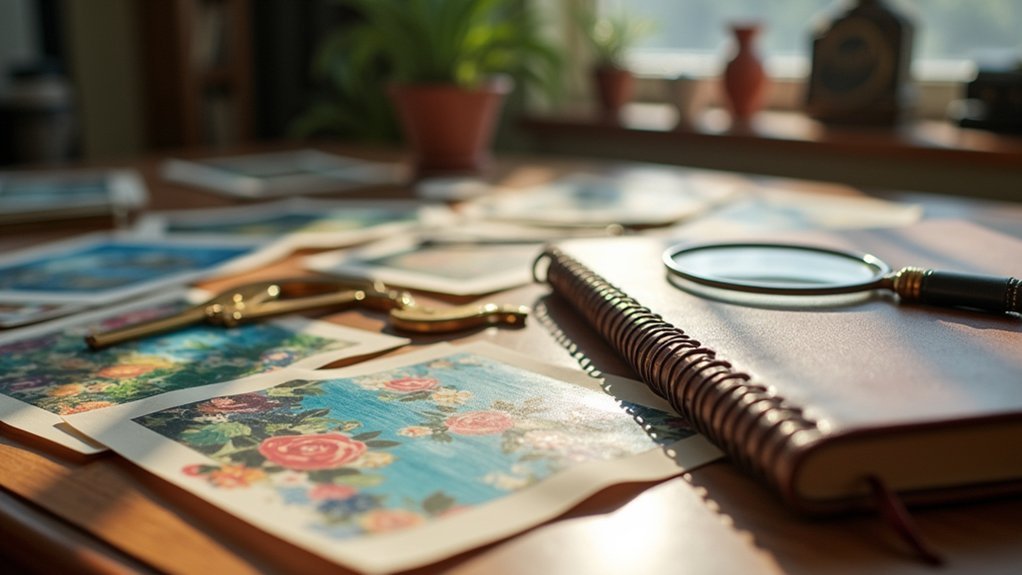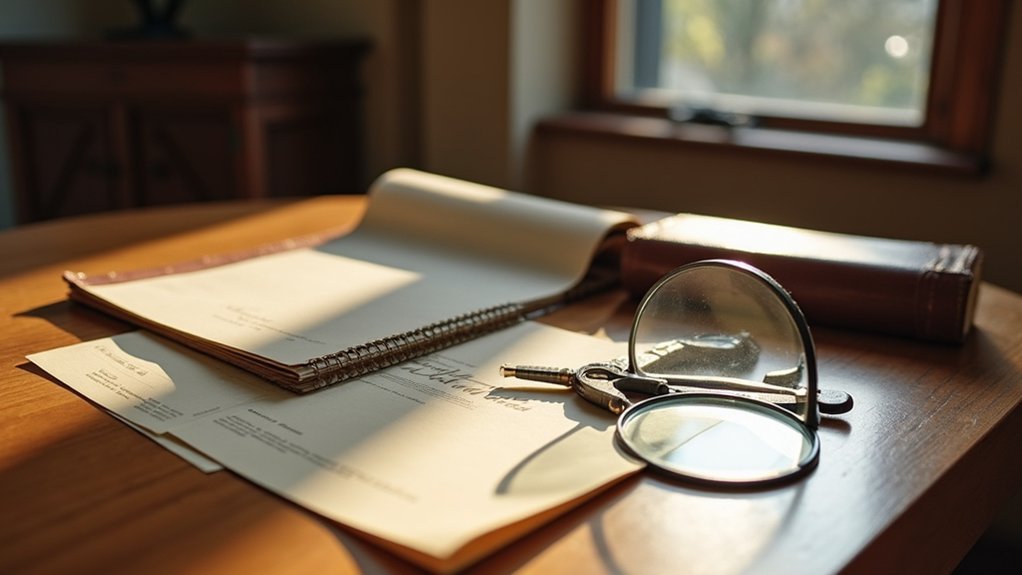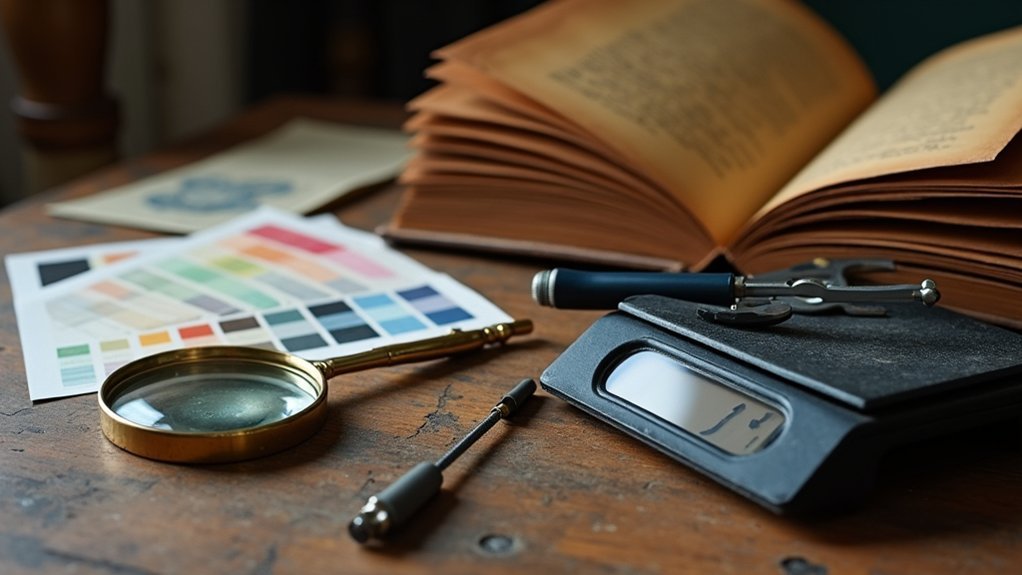You’ll need to master five critical valuation standards to accurately assess your artwork’s worth, whether you’re insuring a collection, settling an estate, or preparing for a sale. Start by understanding different methods like fair market value and comparative market analysis, then evaluate key factors including condition, provenance, and artist reputation. Always work with certified appraisers who follow professional standards, maintain thorough documentation, and regularly update valuations to reflect current market conditions for best accuracy.
Understanding Different Types of Art Valuation Methods

When you’re evaluating artwork, you’ll encounter several distinct valuation methods that serve different purposes and contexts.
Fair market value determines what you’d pay in a willing buyer-seller transaction, making it essential for estate planning and tax purposes.
The comparative market data approach compares your piece to similar works sold at auction houses, forming the backbone of most personal property appraisals.
You’ll use retail replacement value for insurance values, as it represents the highest cost to replace your artwork.
The income approach estimates value based on potential earnings from investment-grade pieces.
Finally, the cost approach works best for new or unknown artists, calculating what you’d spend creating an identical piece rather than relying on market performance.
Key Factors That Influence Art Piece Values
Several vital factors determine an artwork’s market value, each carrying substantial weight in the appraisal process. When you’re seeking an art appraisal, understanding these elements helps you anticipate financial valuation outcomes.
Your artwork’s condition directly impacts its market value—pristine pieces command considerably higher prices than damaged ones. The artist’s reputation plays a key role, as established “blue chip” artists typically achieve better auction house’s results. Subject matter influences desirability, with iconic themes generating stronger cultural value and market demand.
| Factor | Impact on Value |
|---|---|
| Artist’s Reputation | Established artists command higher prices |
| Condition | Pristine condition considerably increases value |
| Provenance | Notable ownership history enhances desirability |
| Rarity | Limited editions are more valuable |
Provenance and rarity complete the valuation equation, creating thorough market assessments.
Working With Certified Art Appraisers and Professional Standards

Understanding these valuation factors prepares you to work effectively with certified art appraisers who bring professional expertise to the assessment process.
These professionals adhere to the Uniform Standards of Professional Appraisal Practice, ensuring consistent professional standards across all valuations. You’ll want appraisers holding membership in organizations like the Appraisers Association of America, which maintains rigorous certification requirements.
Certified art appraisers provide formal documentation that insurance companies accept for coverage and claims. They’ll accurately reflect current market value using comparable sales data and market trend analysis.
Professional art appraisers deliver market-accurate valuations with comprehensive documentation that meets insurance and financial institution requirements.
Whether you’re valuing art for estate planning, calculating capital gains, or updating insurance policies, professional appraisers deliver the detailed methodology and documentation required by legal and financial institutions.
Documentation Requirements for Accurate Art Valuations
Although certified appraisers bring essential expertise to your valuation process, you’ll need detailed documentation to support their assessment and guarantee accurate results. Proper documentation guarantees compliance with regulations and establishes transparency in your appraisal.
You must gather extensive records for accurate artwork valuation:
- Provenance and authenticity records – Include detailed descriptions, exhibition history, and sales records that verify your artwork’s legitimacy and market value.
- Condition reports – Document any damage or restoration history, as these factors notably impact your piece’s worth.
- Methodology documentation – Make sure your appraiser includes their assessment process for transparency and credibility.
For artworks exceeding $5,000, you’ll need an IRS Statement of Value requiring formal appraisal.
Keep detailed records of past valuations and market trends to support future assessments and track your artwork’s evolving value.
Maintaining and Updating Your Art Collection Values Over Time

Once you’ve established proper documentation for your art collection, maintaining accurate valuations requires ongoing attention to market dynamics and systematic record-keeping.
You’ll need to regularly update Fair Market Value assessments to reflect current art market conditions. Keep detailed records tracking each piece’s provenance and condition, as these factors directly impact valuation over time.
Schedule periodic consultations with professional appraisers, especially when economic conditions shift or you acquire new pieces.
Digital platforms like Artwork Archive help streamline this process, making it easier to monitor value changes across your collection.
Stay informed about market trends affecting your specific artists and genres.
External factors can dramatically influence artwork desirability and pricing, so consistent appraisals guarantee your insurance coverage and estate planning remain accurate and thorough.
Frequently Asked Questions
How to Determine the Value of a Piece of Art?
You’ll need to assess the artist’s reputation, artwork’s condition, and provenance. Research recent sales of comparable pieces to establish fair market value that willing buyers would pay sellers.
What Are the 7 Elements of Art Value?
You’ll assess artist reputation, subject matter significance, artwork condition, provenance history, and rarity when determining value. However, traditional art theory typically recognizes seven formal elements: line, shape, form, color, value, texture, and space.
What Are the Criteria for Evaluating Art?
You’ll evaluate art by examining the artist’s reputation, subject matter significance, artwork condition, ownership provenance, and rarity. You’re also considering technical skill, historical importance, and current market demand when determining value.
How to Appraise a Piece of Art?
You’ll need to document the artwork’s condition, research comparable sales, hire a certified appraiser following USPAP standards, gather provenance documentation, and determine whether you need fair market or replacement value.
In Summary
You’ll protect your art investment by implementing these valuation standards consistently. Don’t underestimate the importance of professional appraisals and proper documentation – they’re essential for insurance, resale, and estate planning. Keep your valuations current by scheduling regular updates, especially for contemporary pieces in volatile markets. Remember, you’re not just collecting art; you’re building a valuable asset portfolio that requires the same attention you’d give any significant investment.





Leave a Reply